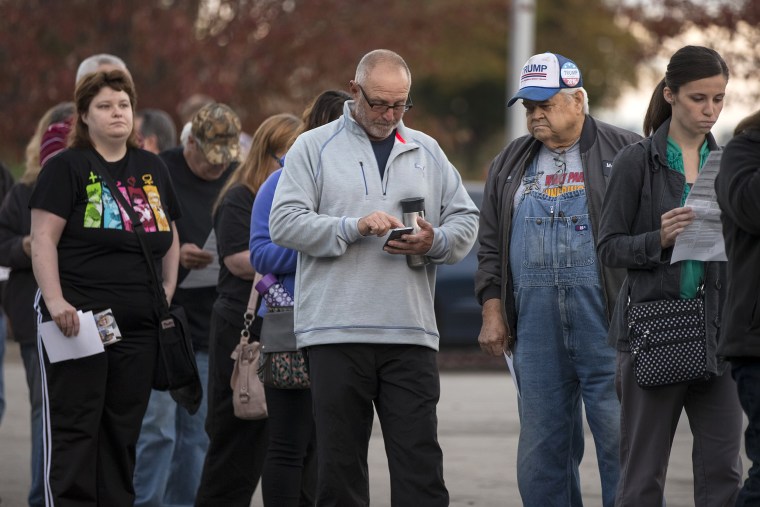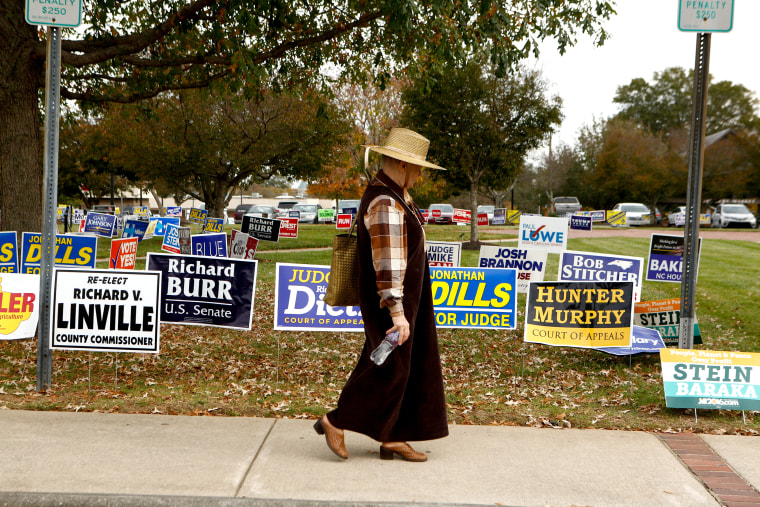Picture this: It’s Election Day. You start getting dressed to go to your polling place. You see your favorite t-shirt; the one that says “Black Lives Matter” (or, maybe, “All Lives Matter.”) You start to put it on, but then you realize it might be against state law to wear that t-shirt to vote.
On Feb. 28, the Supreme Court of the United States heard arguments in Minnesota Voters Alliance v. Mansky — a case that presents a clash between two vitally important rights: the right to vote in a safe environment, free from intimidation by other voters and the right to say (and wear) what you want.
Every state in the nation has so-called “buffer zones” surrounding polling places — these are places where the practice of advocating for the election or defeat of a candidate, political party or ballot measure is prohibited. Clearly, there is something problematic about being surrounded by people attempting to sway your vote right outside a polling place. Indeed, in 1992, the Supreme Court of the United States recognized the need for a 100-foot buffer zone around polling places to keep people from trying to solicit votes as well as distribute or display campaign material.
But some states, including Delaware, Kansas, Montana, New Jersey, New York, South Carolina, Tennessee, Texas, Vermont and Minnesota do more than merely prohibit campaigning at or around polling places. At issue in Minnesota Voters Alliance v. Mansky is a state law that prohibits people from wearing apparel that presents any political message, related or not to a specific candidate or measure. Specifically, the law prohibits the wearing of a “political badge, political button, or other political insignia at or about the polling place.”
Minnesota’s law is comparatively broad. There is a difference between urging people to vote a certain way and merely espousing a political view or ideology.
Minnesota’s law is comparatively broad. There is a difference between urging people to vote a certain way and merely espousing a political view or ideology. That difference is constitutionally significant, and Minnesota’s law goes too far in its restriction of political speech.
Andrew Cilek agrees. In 2010, Cilek donned his “Don’t Tread on Me” shirt — which included an image adopted by the Tea Party logo — and a button that read “Please I.D. Me” when he showed up to his local polling place. Cilek’s button is clearly a reference to voter identification laws. More specifically, it could easily be viewed as a critique of Minnesota’s lack of voter identification laws. It is also not difficult to see how Cilek’s button could confuse voters into thinking that there were in fact laws requiring voter identification.
A poll worker initially asked Cilek to conceal or remove his shirt and button. He refused and was ultimately allowed to vote, but only after a poll worker recorded his name and address in case someone wanted to enforce the state law against him later. Cilek has now taken his fight all the way to the Supreme Court.
Cilek argues that Minnesota’s law infringes on his First Amendment right to political expression. If he wants to silently convey a political message by wearing a certain shirt or button, then he claims the First Amendment must protect that right.

Cilek also points out that there are significant enforcement problems associated with the law. Poll workers are perhaps not the people who should be deciding which clothing items or buttons do or do not convey a political message. It is entirely possible, for example, that a poll worker on one block would think a sweatshirt that says “remember to recycle, our future depends on it” violates the law, while a poll worker a few blocks away might find the same sweatshirt unobjectionable. There almost certainly have and will continue to be arbitrary and inconsistent opinions on what voters can and cannot wear to the polls. This should not be the way we decide to restrict political speech.
Minnesota, on the other hand, claims that the law is justified in order to prevent voter confusion and intimidation and to preserve the peace at polling places.
As a country, we should ensure that people feel safe and comfortable when they go their local polling places. Voter turnout rates in America are somewhere between shameful and dismal when you consider the weight of the issues currently facing us. And therefore America should not do anything to disincentive people from voting.
One of the bedrocks upon which our country was founded is the First Amendment — specifically, the freedom of not just expression, but political expression.
However, one of the bedrocks upon which our country was founded is the First Amendment — specifically, the freedom of not just expression, but political expression. It is true that different First Amendment rules apply in polling places because they are “nonpublic forums,” meaning they are places that have not traditionally been open to expression. (Other examples of nonpublic forums include military bases and jails.) Simply put, it is much, much easier to restrict speech in a nonpublic forum than in any other space. But the First Amendment’s protection should be considered a sort of zenith when it comes to political speech.
As oral arguments indicated, this case is hardly a slam dunk. There are important factors weighing on both sides. The justices grappled with where to best strike the balance between protecting the right to speak versus the right to vote in an environment free from intimidation. Justice Neil Gorsuch put it bluntly in court when he said: “How are we supposed to police the line?”
Voters, and indeed all Americans, should take more comfort in the protections afforded by our right to express ourselves than protections designed to prevent voters from seeing political messages inside the polling place. Some of those messages might make us uncomfortable, but ultimately, Minnesota has simply gone too far in its well-intentioned effort to shield voters.
Jessica A. Levinson is a professor at Loyola Law School, Los Angeles, and is the president of the Los Angeles Ethics Commission.

